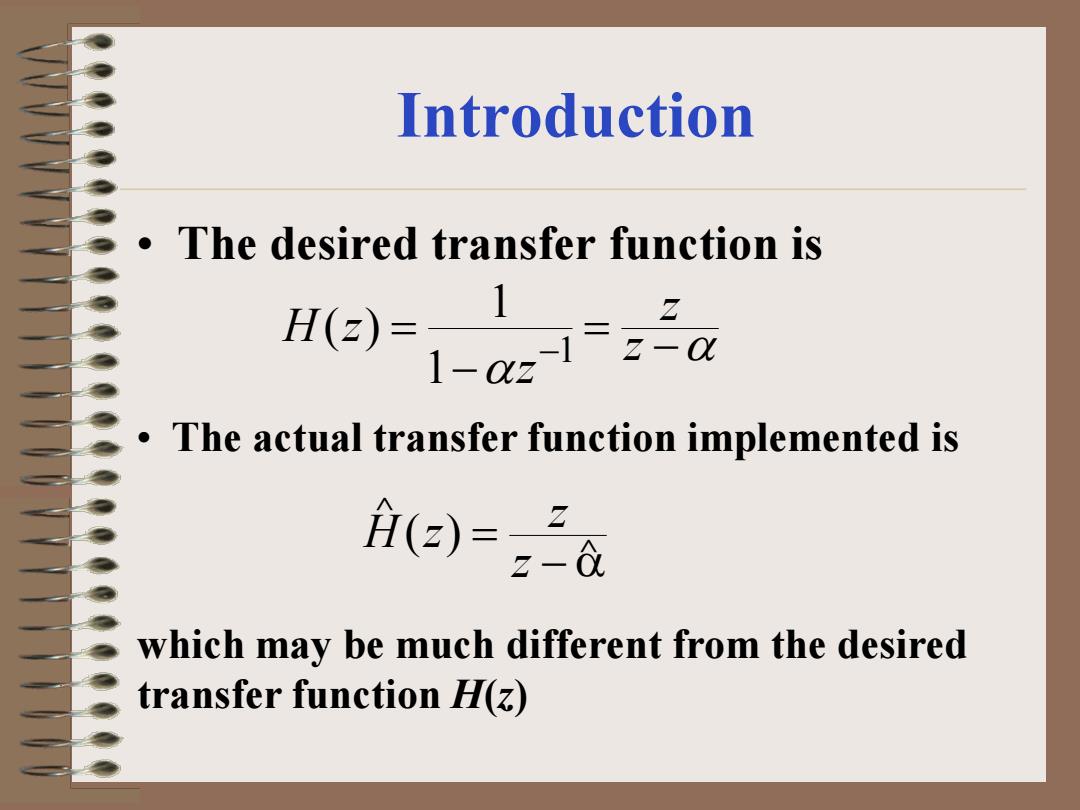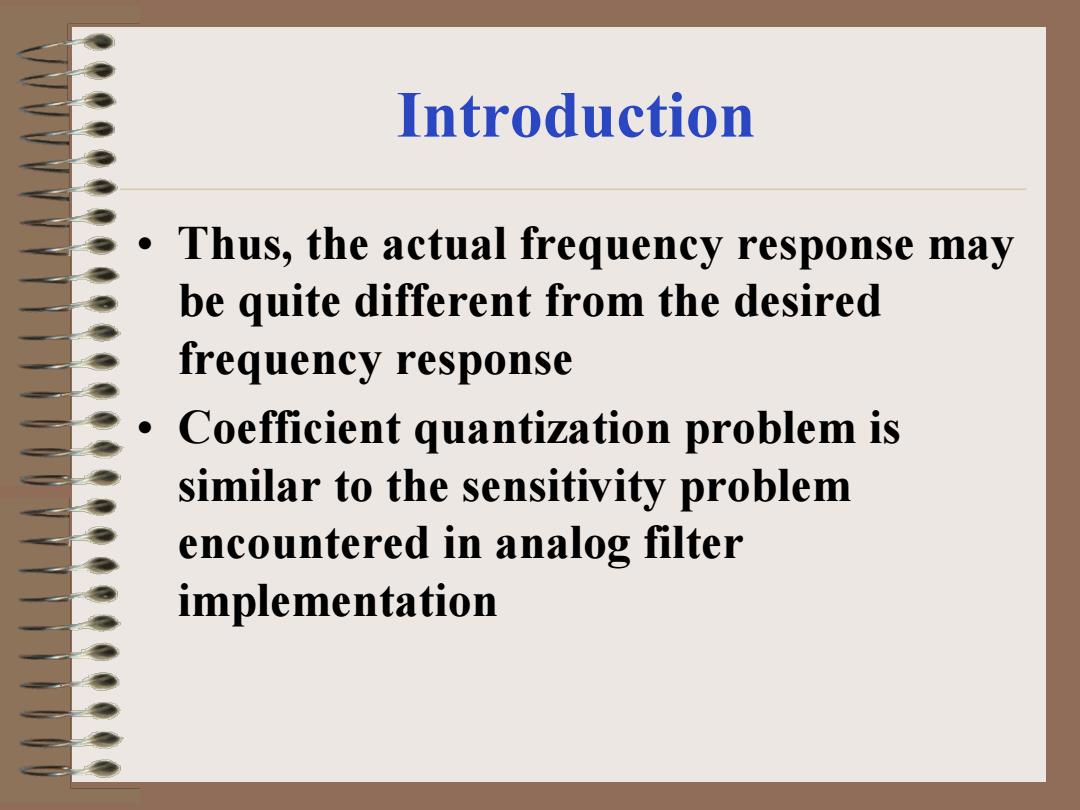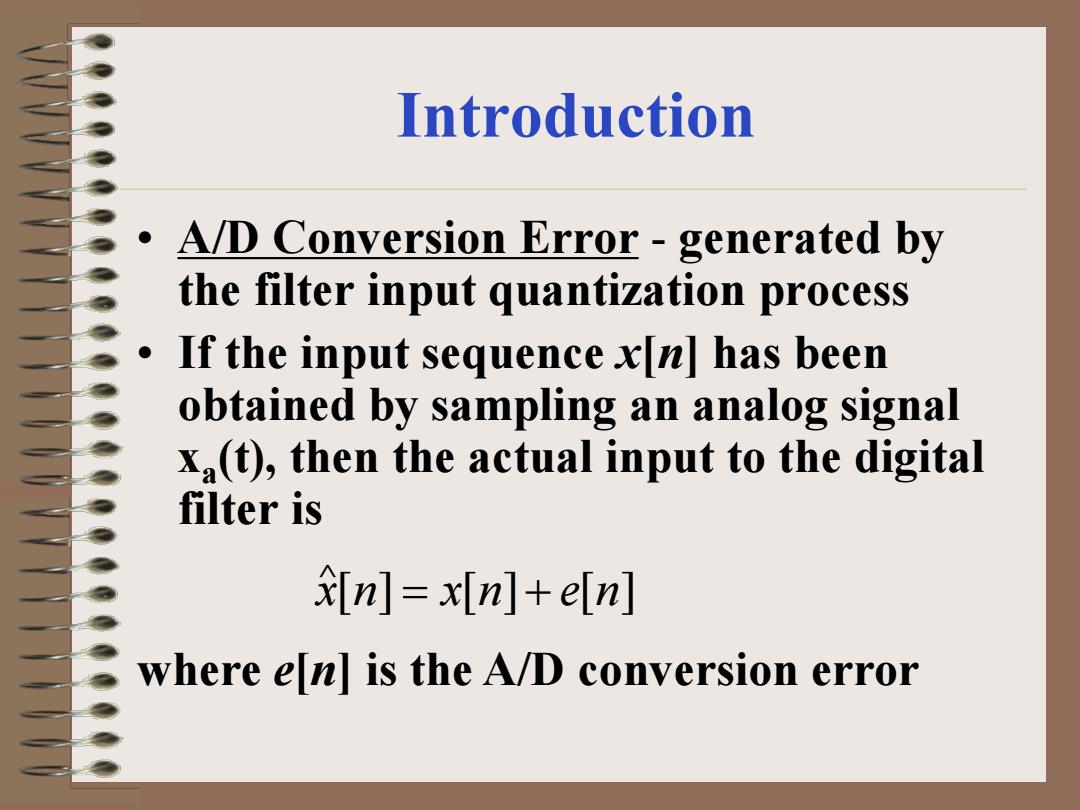
Introduction The desired transfer function is H(z)= 1-az-1-5-a The actual transfer function implemented is e)-:2a which may be much different from the desired transfer function H()
Introduction • The desired transfer function is α α − = − = − z z z H z 1 1 1 ( ) − α = z z H(z) ^ ^ which may be much different from the desired transfer function H(z) • The actual transfer function implemented is

Introduction Thus,the actual frequency response may be quite different from the desired frequency response Coefficient quantization problem is similar to the sensitivity problem encountered in analog filter implementation
Introduction • Thus, the actual frequency response may be quite different from the desired frequency response • Coefficient quantization problem is similar to the sensitivity problem encountered in analog filter implementation

Introduction A/D Conversion Error generated by the filter input quantization process If the input sequence x[n]has been obtained by sampling an analog signal xa(t),then the actual input to the digital filter is n]x(n]+eln] where en]is the A/D conversion error
Introduction • A/D Conversion Error - generated by the filter input quantization process • If the input sequence x[n] has been obtained by sampling an analog signal xa(t), then the actual input to the digital filter is x[n] = x[n]+ e[n] ^ where e[n] is the A/D conversion error

Introduction Arithmetic Quantization Error-For the first-order digital filter,the desired output of the multiplier is vIn]=ay(n-1] Due to product quantization,the actual output of the multiplier of the implemented filter is n]ayIn-1]+ea[n]=v[n]+ealn] where ealn]is the product roundoff error
Introduction • Arithmetic Quantization Error - For the first-order digital filter, the desired output of the multiplier is v[n] =αy[n −1] v[n] y[n 1] e [n] v[n] e [n] = α − + α = + α ^ where eα[n] is the product roundoff error • Due to product quantization, the actual output of the multiplier of the implemented filter is